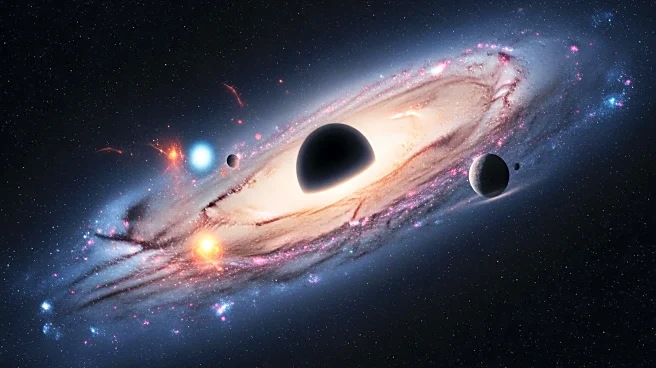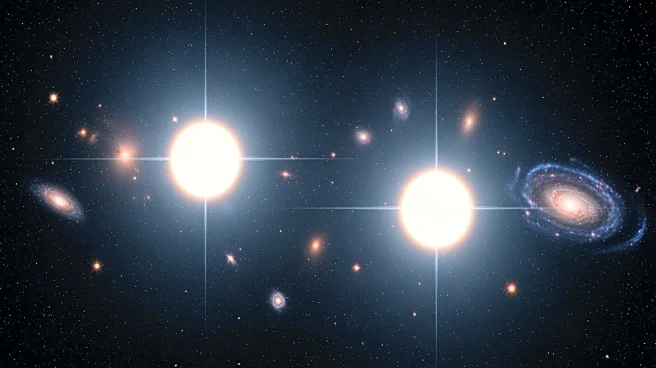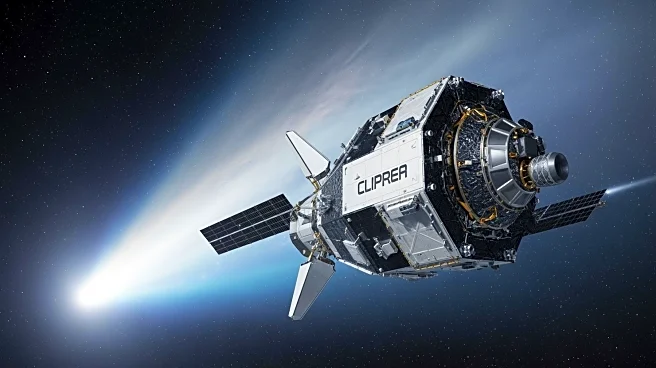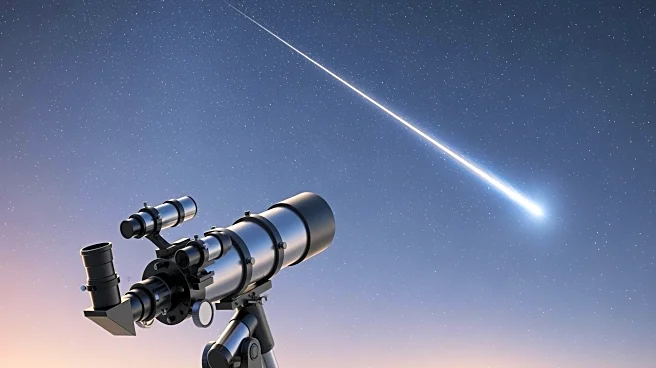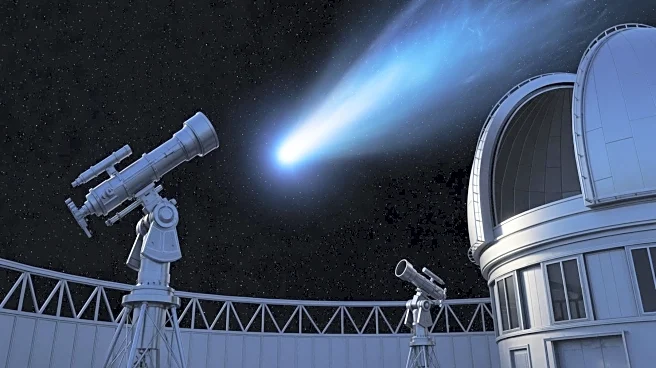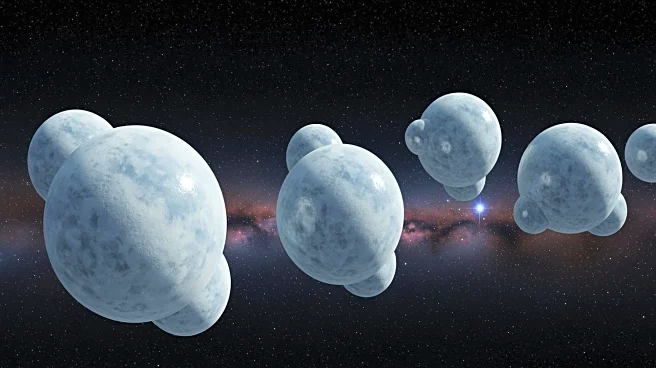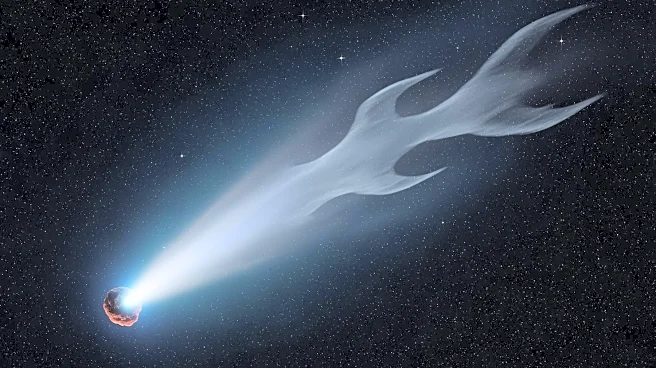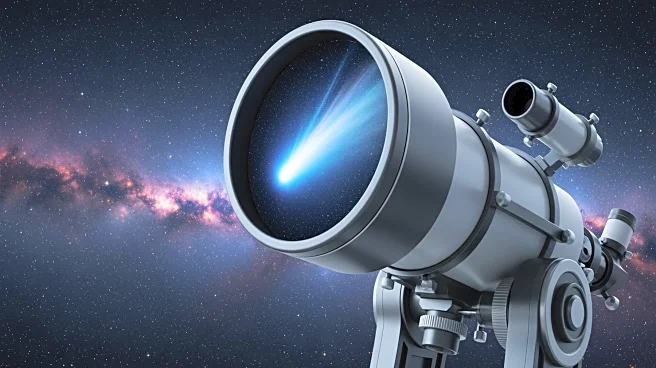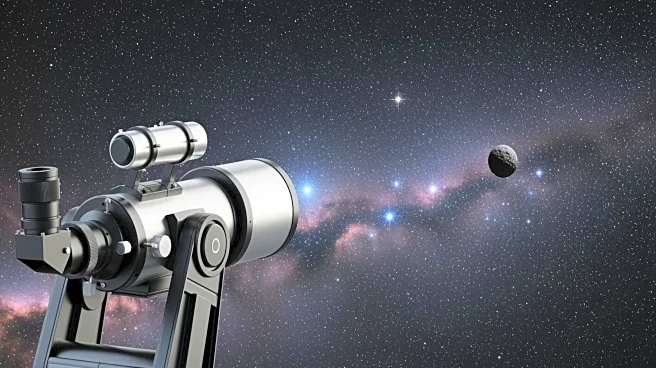What's Happening?
NASA has released an audio clip capturing sound waves from a supermassive black hole located 250 million light-years away in the Perseus galaxy cluster. These acoustic waves, originally detected in 2003,
have been transposed up 57 and 58 octaves to make them audible to human ears. The sound waves were extracted radially from the black hole and played in an anti-clockwise direction, resulting in an eerie sound. This sonification project was made possible by the Chandra X-ray Observatory, which detected the sound waves initially. The sounds are not just a scientific curiosity; they play a role in heating the intracluster medium, which can affect star formation and the evolution of galaxy clusters.
Why It's Important?
The release of these sounds provides a unique way to experience cosmic phenomena and has scientific value. The ability to hear sound waves from a black hole offers insights into the heating mechanisms of the intracluster medium, which is crucial for understanding star formation and galaxy evolution. This project highlights the innovative use of sonification in astronomy, allowing researchers to explore hidden details in cosmic data. The findings could have implications for future studies on the dynamics of galaxy clusters and the role of sound waves in cosmic processes.
What's Next?
The sonification of cosmic phenomena is likely to continue, with researchers exploring new ways to transform visual data into sound. This method could lead to more detailed discoveries about the universe, as transforming datasets can reveal hidden details. Future projects may focus on other cosmic events, such as the sonification of light data from different frequencies, to provide a broader understanding of the universe's mysteries.
Beyond the Headlines
The sonification of black hole sounds raises questions about the perception of space and the role of sound in cosmic environments. It challenges the misconception that space is silent due to its vacuum nature, highlighting the presence of sound in dense galaxy clusters. This project also underscores the importance of interdisciplinary approaches in science, combining astronomy, physics, and audio engineering to enhance our understanding of the universe.
